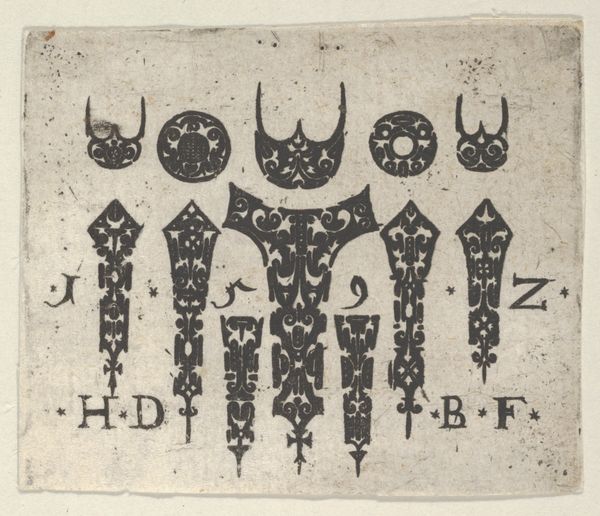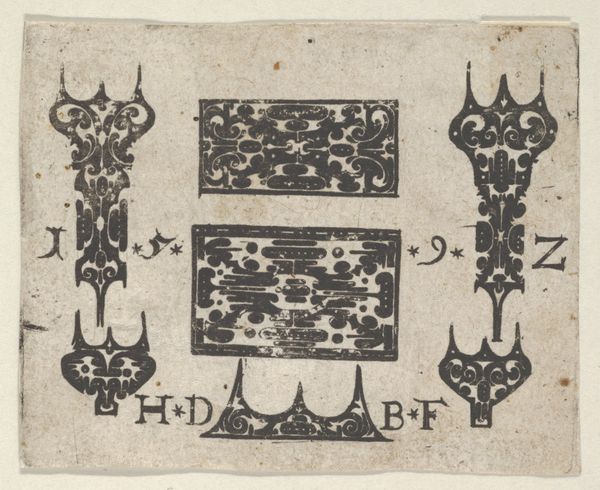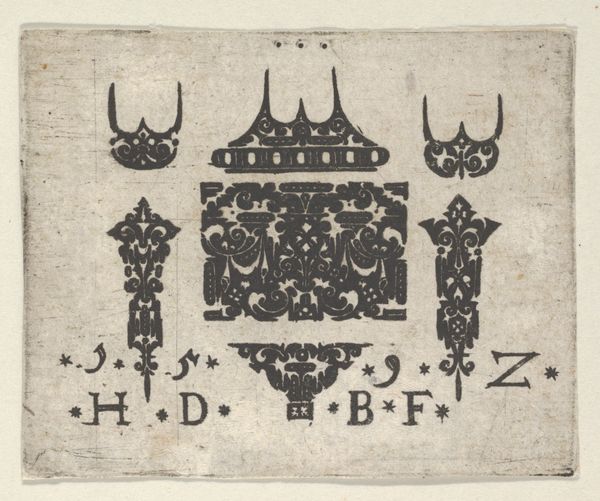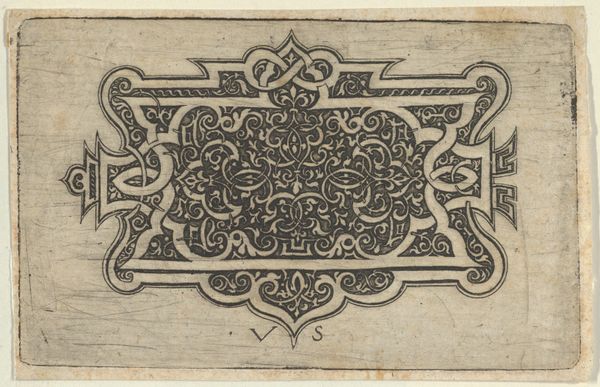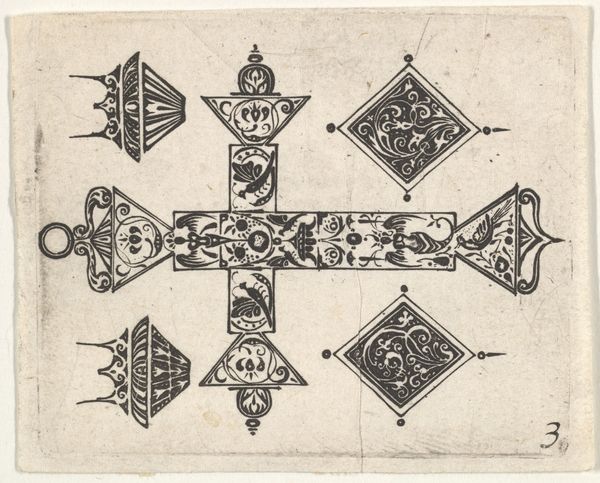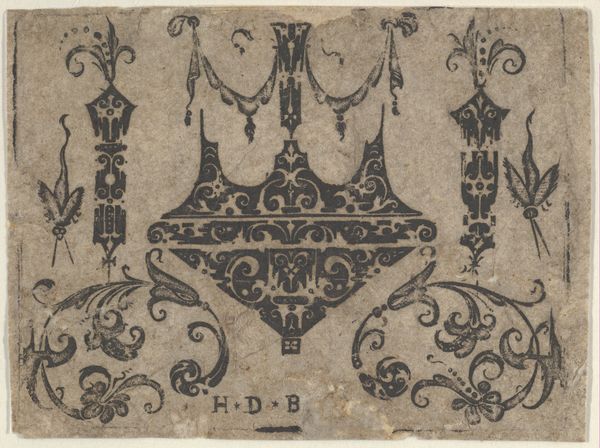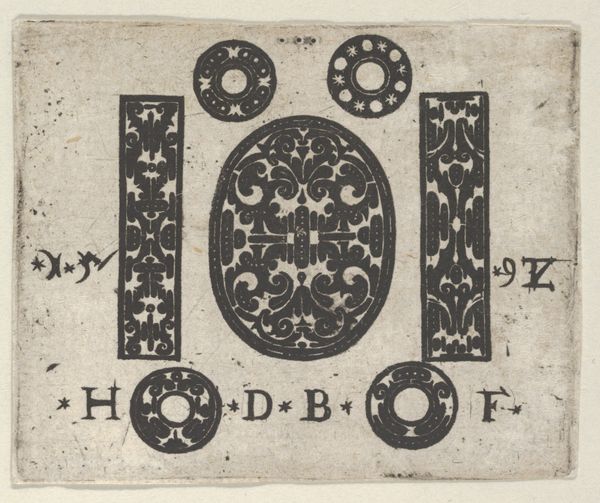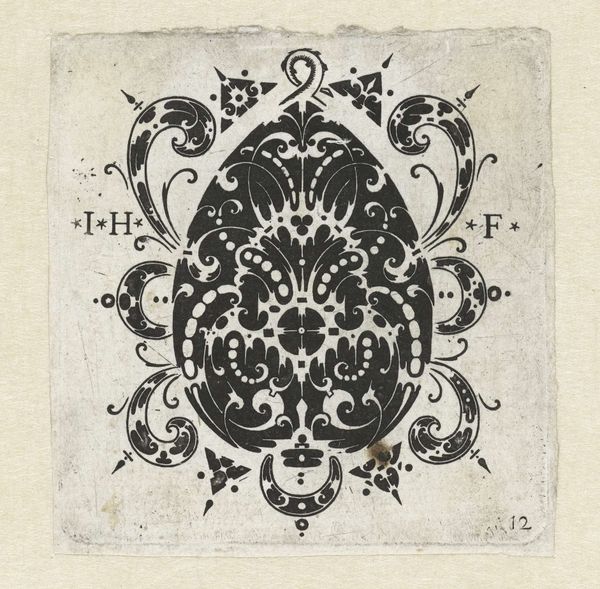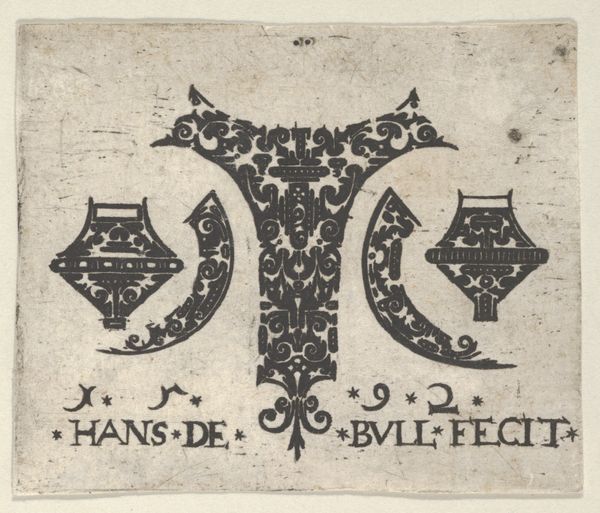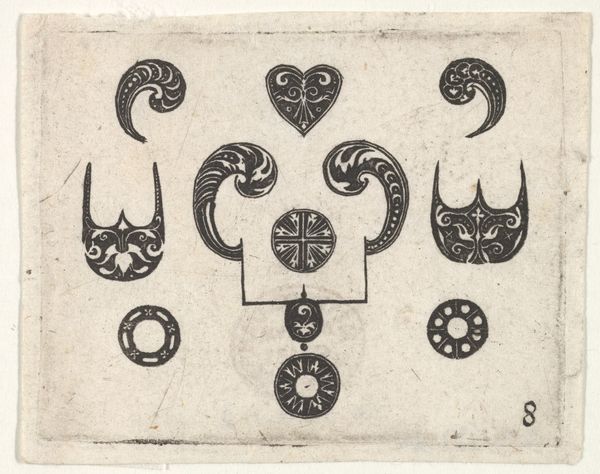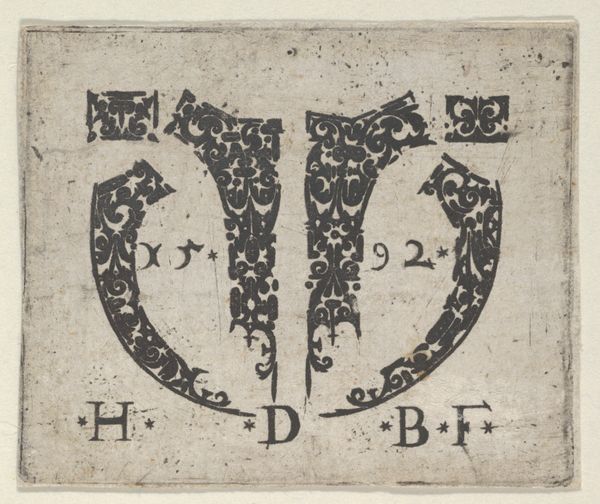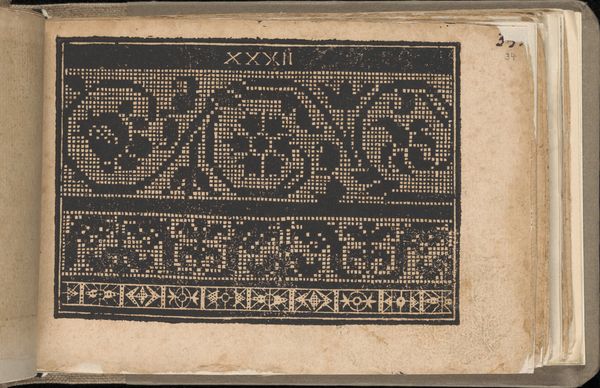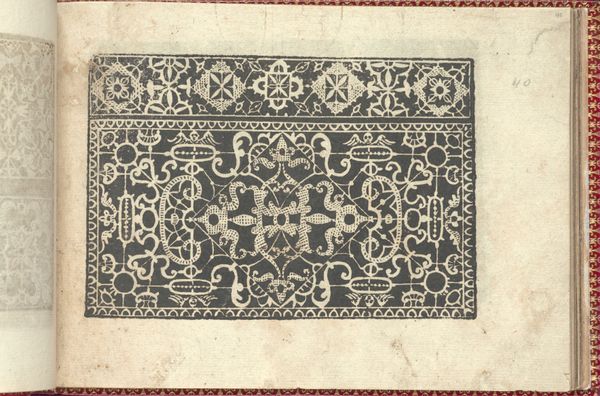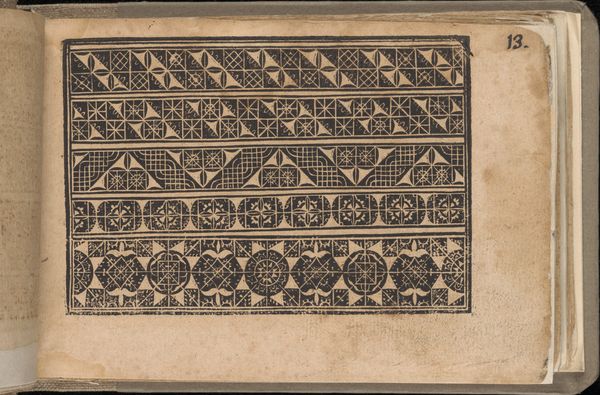
Blackwork Print with a Large Bezel Design at Center Surrounded by Four Smaller Fillets 1592
0:00
0:00
drawing, graphic-art, print, engraving
#
drawing
#
graphic-art
# print
#
11_renaissance
#
engraving
Dimensions: Sheet: 1 7/8 × 2 5/16 in. (4.8 × 5.9 cm)
Copyright: Public Domain
Curator: We’re looking at "Blackwork Print with a Large Bezel Design at Center Surrounded by Four Smaller Fillets" by Hans de Bull, created in 1592. It’s an engraving, currently held in the collection of the Metropolitan Museum of Art. Editor: My immediate reaction is of a certain formality. The arrangement of shapes, and the intricacy of detail suggest a ceremonial purpose, even regal, although its execution in black ink offers an almost stark contrast. Curator: Blackwork prints of this era were frequently used as design templates for embroidery, particularly popular for decorating clothing and linens amongst the upper classes. So its function certainly dictated its aesthetic, the details had to be crisp and the overall pattern well-structured for replication. Editor: So function leads to form; the arrangement then supports the central Bezel’s prominence through a calculated rhythm. Note how your eye moves from the center design to each corner design; this deliberate ordering highlights the importance of each shape to the whole. Curator: The use of printmaking as a means of disseminating these patterns also highlights a fascinating intersection of art, craft, and commerce during the Renaissance. De Bull wasn't just an artist; he was part of a broader network of artisans catering to a specific clientele, and how were new decorative elements being developed, circulated and adopted in sixteenth-century Europe? Editor: I think the composition speaks volumes about the Renaissance interest in ornamentation and detail; what do the letterings around each bezel signify, for the original buyers and artists engaging with the sheet for potential textile transfer and interpretation? Curator: Those monograms may have referenced specific embroidery workshops or even signified personalization options for patrons acquiring the designs. Their presence emphasizes the design's intention to be used rather than simply admired. The print provided access. Editor: Absolutely, that detail really reinforces how this work acted as a commercial vector in early European material culture and trade; it’s both design and distribution method embodied. Curator: Precisely. Considering it through the lens of material history enriches our interpretation far beyond simply seeing a graphic artwork from the Renaissance period. Editor: And scrutinizing the intricacies and construction further enriches how we observe design at work, at all levels and scale; the visual rhetoric suggests something functional yet also inherently decorative. Curator: Indeed. The print beautifully melds design innovation and societal context into something practical and, in its own way, quite refined.
Comments
No comments
Be the first to comment and join the conversation on the ultimate creative platform.
